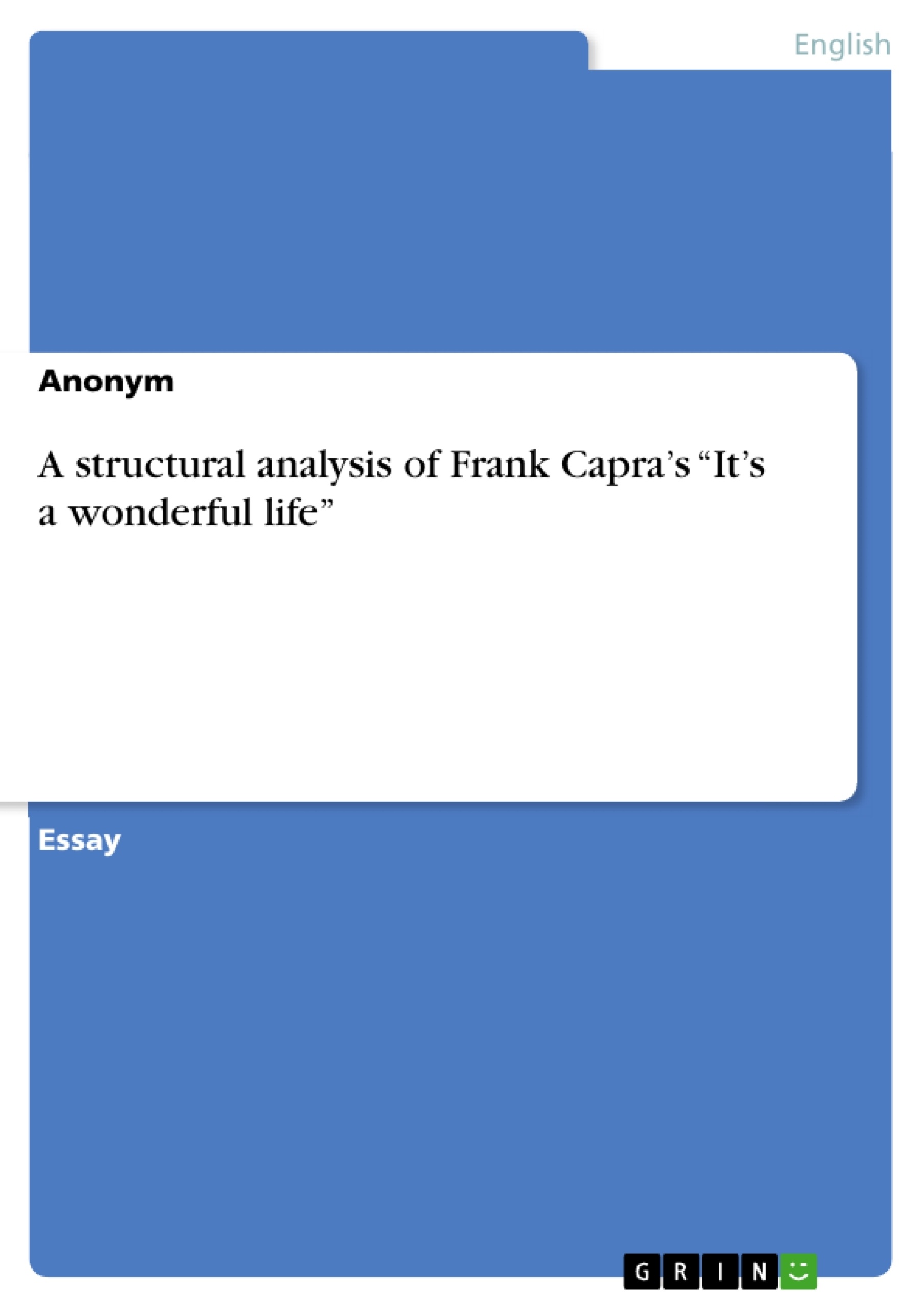This essay performs multiple tasks. On the one hand the narrative structure
of Frank Capra’s “It’s a wonderful life”, directed in 1947 shall be worked out.
It’s intended to show how meaning is created in this movie through an
understanding of its specific narrative structure.
On the other hand, this essay will include several central ideas from
contemporary texts in narrative theory, like William Simon for example.
Inhaltsverzeichnis (Table of Contents)
- Introduction
- Significance today
- Storyline
- The movie in sequences
- General Overview
- George Bailey's youth
- George stuck in Bedford Falls
- George in trouble
- Clarence's appearance
- A parallel universe
- Everything back to normal and a happy ending
- Conclusion
Zielsetzung und Themenschwerpunkte (Objectives and Key Themes)
This essay aims to analyze the narrative structure of Frank Capra's "It's a Wonderful Life," highlighting how meaning is generated through its specific narrative structure. The essay explores central ideas from contemporary narrative theory, like William Simon's analysis of "The Godfather Part One," to structure the movie into distinct chapters. It also investigates various themes of the movie, analyzing each chapter separately to understand the narrative structure and then examining overarching themes that extend beyond individual chapters. The essay further analyzes the character traits of the protagonist, George Bailey, in contrasting situations, and examines the role of the viewer in the movie's narrative. Here are some key themes explored in the essay: * **Narrative Structure:** The essay focuses on analyzing the narrative structure of the movie and its impact on meaning creation. * **Themes of Despair and Redemption:** Both the protagonist, George Bailey, and the character Scrooge in Dickens's "A Christmas Carol" experience despair but ultimately find redemption. * **The Significance of the Everyday:** The movie emphasizes the importance of seemingly mundane actions and choices in shaping one's life and having an impact on others. * **The Power of Perspective:** The essay explores the impact of different perspectives on the story and the viewer's understanding of the characters and their actions. * **The Role of the Viewer:** The essay examines how the audience interacts with the story and how their position shifts throughout the film.Zusammenfassung der Kapitel (Chapter Summaries)
- Introduction: The essay introduces the objective of analyzing the narrative structure of "It's a Wonderful Life" and explores key themes related to the movie's narrative construction.
- Significance Today: This chapter discusses the enduring appeal of "It's a Wonderful Life" and its transformation into a Christmas tradition, comparing it to other classic holiday films. It explores the movie's resonance with audiences over time and highlights its timeless themes.
- Storyline: This chapter provides a general overview of the movie's plot, introducing the protagonist, George Bailey, and his life in Bedford Falls. It highlights the conflict between George's dreams and his responsibilities, setting the stage for the story's unfolding.
Schlüsselwörter (Keywords)
This essay explores the narrative structure of "It's a Wonderful Life," drawing on contemporary narrative theory, specifically referencing William Simon's analysis of "The Godfather Part One." The key concepts explored include narrative structure, thematic analysis, character development, the role of the viewer, and the significance of everyday life. The essay investigates themes of despair and redemption, the power of perspective, and the enduring appeal of "It's a Wonderful Life" as a classic Christmas film.
Excerpt out of 23 pages
- scroll top
- Quote paper
- Anonym (Author), 2011, A structural analysis of Frank Capra’s “It’s a wonderful life”, Munich, GRIN Verlag, https://www.hausarbeiten.de/document/191638
Look inside the ebook


